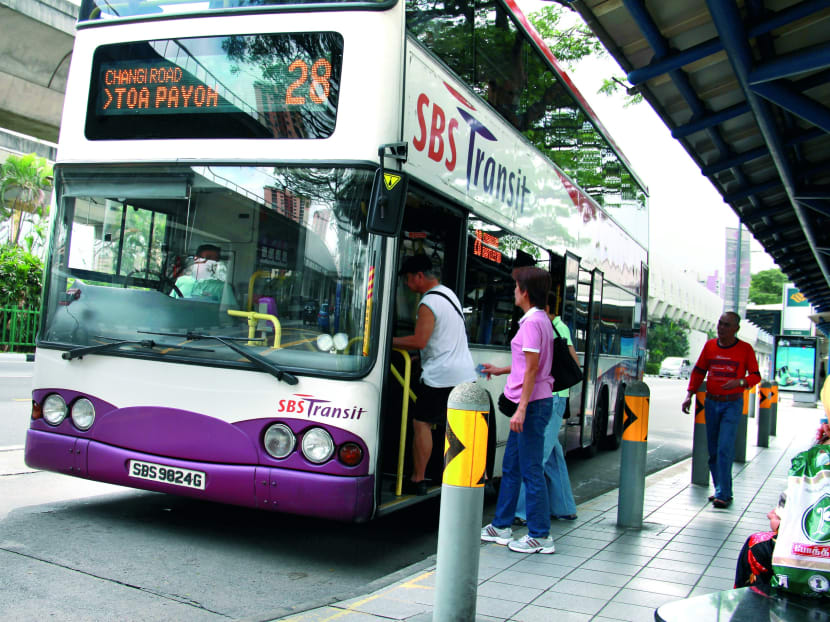Pay more for bus rides if you want better service
The MRT train moves slower than before on the way to work and then breaks down, leaving you and your boss fuming as you reach the office late. On the way home, the buses are bunched together and still packed, so you are late for dinner with your family. And consumers facing regular delays such as these still complain about paying more for their ride, denying public transport companies the very funding they need to improve their services.
The MRT train moves slower than before on the way to work and then breaks down, leaving you and your boss fuming as you reach the office late. On the way home, the buses are bunched together and still packed, so you are late for dinner with your family. And consumers facing regular delays such as these still complain about paying more for their ride, denying public transport companies the very funding they need to improve their services.
The dilemma is indeed that public transport operators are probably not going to be able to upgrade service significantly unless they have enough money, the same problem faced by other businesses. Rather than complain about both poor service and fare increases, perhaps it is time for a shift in commuters’ thinking towards paying even more, so that we get the transport services we deserve in a world-class city.
It is easy and perhaps understandable to complain about fare increases, especially since service levels do not seem to have improved measurably in recent years and there are concerns about whether funds from higher fares would be spent wisely.
However, with costs rising faster than fares, it is hard to see how SBS Transit and SMRT can make significant improvements without a little more money than the very small increase the Public Transport Council (PTC) has proposed.
SUMS DON’T ADD UP
The fare increase this year, the first since 2011, is targeted to be only 3.2 per cent. While the PTC suggested an increase totalling 6.6 per cent, the balance of 3.4 per cent will be rolled over to next year. The problem is that this small amount does not even cover the increases in wages and consumer prices that it is supposed to offset, let alone to provide anything more for improvements.
And though the Government is giving transport companies more than S$1 billion, that funding is going towards more buses rather than improving operations.
Costs have indeed increased by far more than 3.2 per cent over the past couple of years. Inflation alone was 4.6 per cent in 2012, according to the Department of Statistics, and last year it totalled about 2.4 per cent through November.
Wages grew by 4.5 per cent in 2012, according to the National Wages Council, and they probably grew by about the same amount last year.
Simply add those numbers up, without even using any fancy models for compounding cost increases over time, and it is hard to see how 3.2 per cent can possibly cover the operating cost.
Admittedly, any increase in cost is supposed to be tempered by increases in productivity. Given both overall drops in productivity in Singapore of 2.6 per cent in 2012 as well as another 2 per cent in the first half of last year, and the likelihood that SBS or SMRT did no better than average, then there is no gain to offset the inflation and wage costs.
Commuters, on the other hand, are finding transport more affordable. The PTC said the Fare Affordability Index actually improved from 5.3 per cent in 2003 to 4.1 per cent in 2012 for second-decile households, for example — meaning that many commuters are paying a smaller percentage of their income for bus and train fares.
WILL FARES BE USED EFFECTIVELY?
A fair question for many commuters would be whether an increase of more than 3.2 per cent would help.
As long as the funds from higher fare increases are used effectively for improvements such as better software or staff training — which seems more probable now that the companies are focusing on operations rather than retailing — the money can indeed make a difference.
Intelligent systems can triple the use of road and rail assets, said consulting firm McKinsey, so putting more money into software could optimise usage of buses and trains.
Redesigning routes, training staff better and providing better information to commuters are a few of the many other options for using the money from higher fares to improve service substantially.
Yes, we would all like lower fares. However, it is hard to see how we can expect transport companies to keep providing better and more reliable services if we do not give them the money to do so.
The PTC said as much in its response on Thursday to readers, adding that this is of concern because our rail system is rapidly ageing and given that the finances of the two operators in the bus sector have been in the red in recent years, as fares have not kept up with cost increases.
Breakdowns and delays cost consumers tremendously in time lost at work and time away from family or friends, as well as in paying for alternate transport.
Unpopular or counter-intuitive as it may be, perhaps now is the time to focus on improving our well-being by providing enough money to improve transportation and paying for more than a 3.2 per cent increase in fares so we can get better service.
It is better than saving a few cents per trip and suffering through still more delays.
ABOUT THE AUTHOR:
Richard Hartung is a consultant who has lived in Singapore since 1992 and commutes to work by bus.







